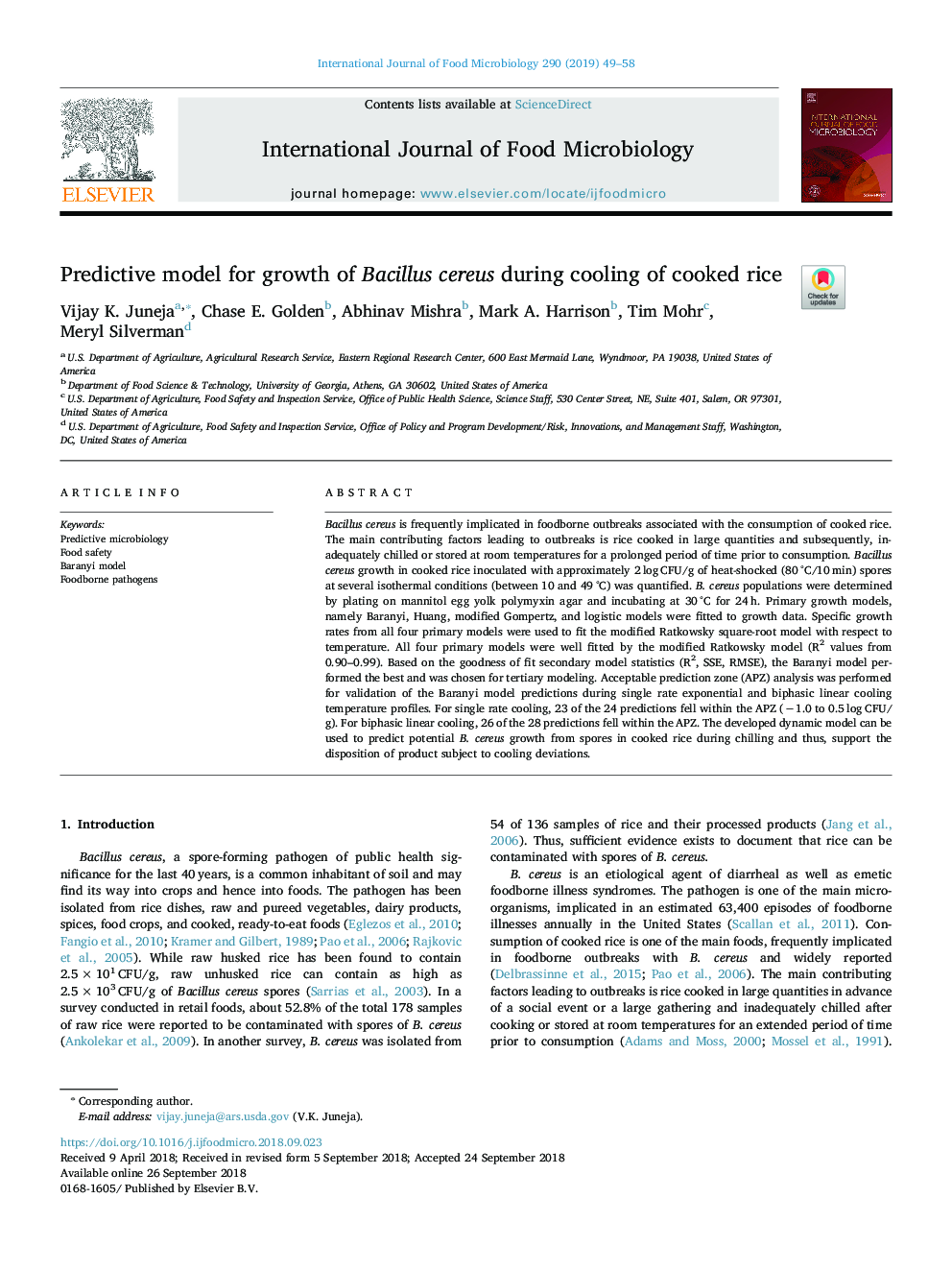| Article ID | Journal | Published Year | Pages | File Type |
|---|---|---|---|---|
| 11016775 | International Journal of Food Microbiology | 2019 | 10 Pages |
Abstract
Bacillus cereus is frequently implicated in foodborne outbreaks associated with the consumption of cooked rice. The main contributing factors leading to outbreaks is rice cooked in large quantities and subsequently, inadequately chilled or stored at room temperatures for a prolonged period of time prior to consumption. Bacillus cereus growth in cooked rice inoculated with approximately 2â¯logâ¯CFU/g of heat-shocked (80â¯Â°C/10â¯min) spores at several isothermal conditions (between 10 and 49â¯Â°C) was quantified. B. cereus populations were determined by plating on mannitol egg yolk polymyxin agar and incubating at 30â¯Â°C for 24â¯h. Primary growth models, namely Baranyi, Huang, modified Gompertz, and logistic models were fitted to growth data. Specific growth rates from all four primary models were used to fit the modified Ratkowsky square-root model with respect to temperature. All four primary models were well fitted by the modified Ratkowsky model (R2 values from 0.90-0.99). Based on the goodness of fit secondary model statistics (R2, SSE, RMSE), the Baranyi model performed the best and was chosen for tertiary modeling. Acceptable prediction zone (APZ) analysis was performed for validation of the Baranyi model predictions during single rate exponential and biphasic linear cooling temperature profiles. For single rate cooling, 23 of the 24 predictions fell within the APZ (â1.0 to 0.5â¯logâ¯CFU/g). For biphasic linear cooling, 26 of the 28 predictions fell within the APZ. The developed dynamic model can be used to predict potential B. cereus growth from spores in cooked rice during chilling and thus, support the disposition of product subject to cooling deviations.
Related Topics
Life Sciences
Agricultural and Biological Sciences
Food Science
Authors
Vijay K. Juneja, Chase E. Golden, Abhinav Mishra, Mark A. Harrison, Tim Mohr, Meryl Silverman,
